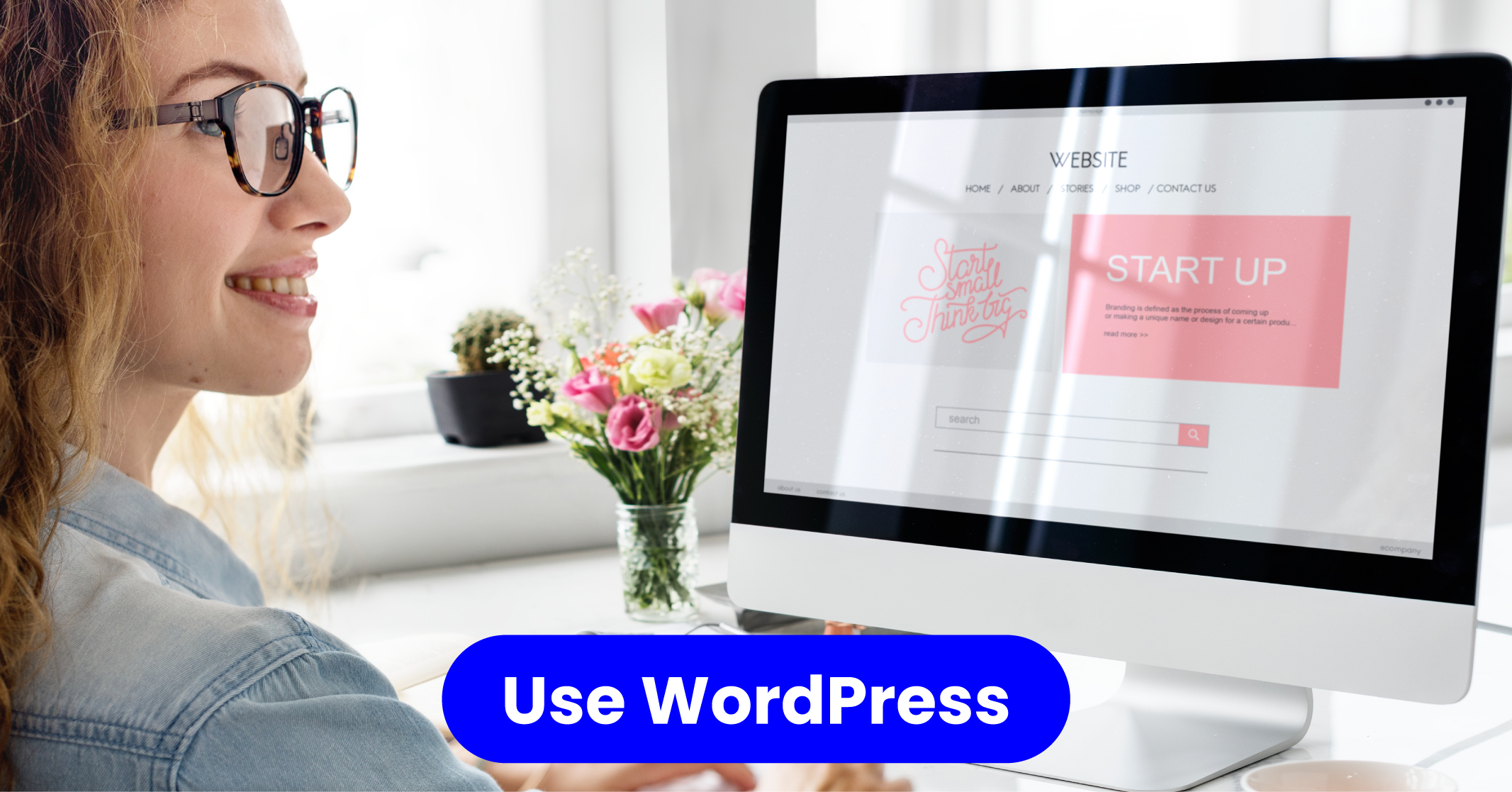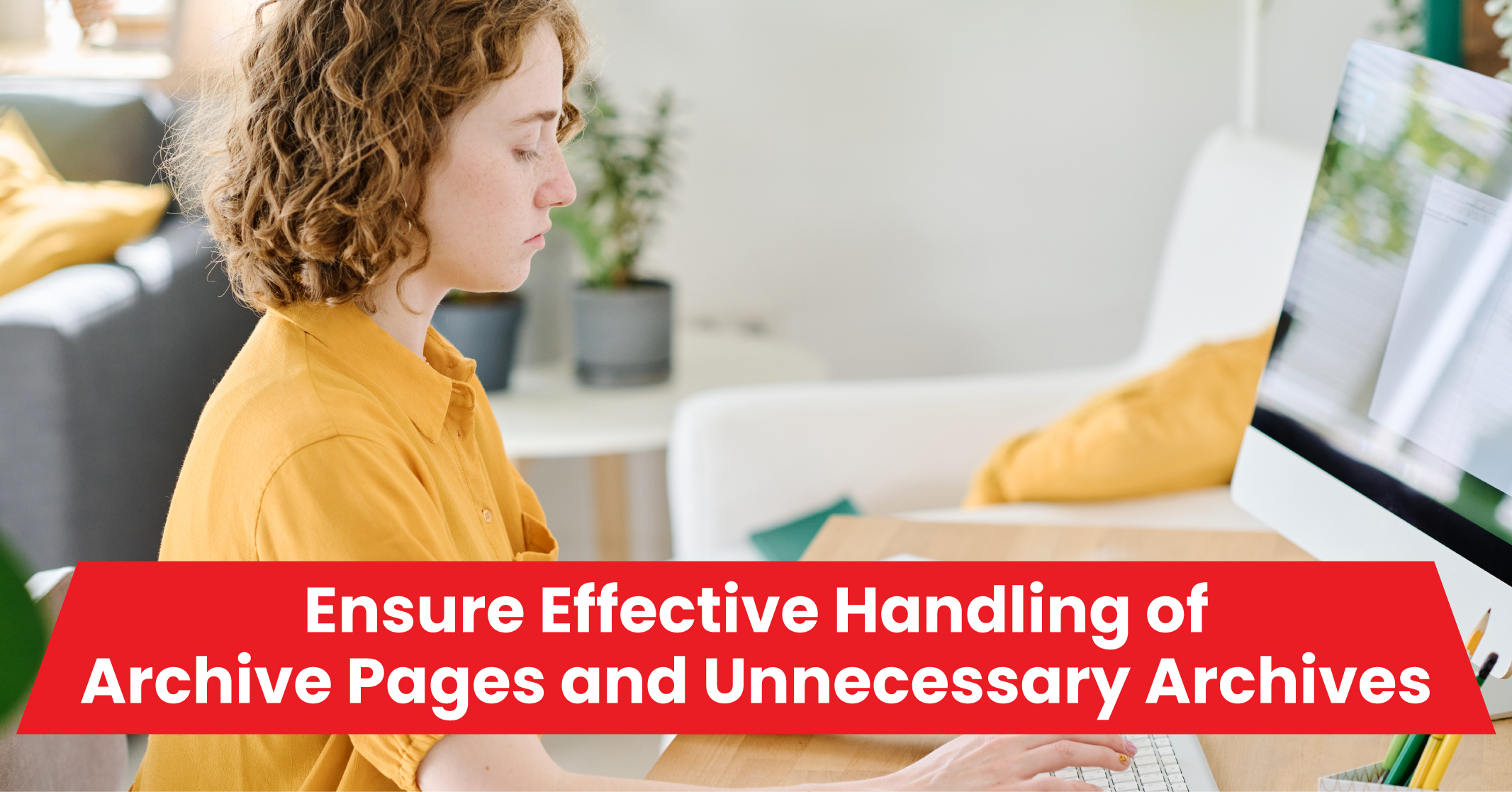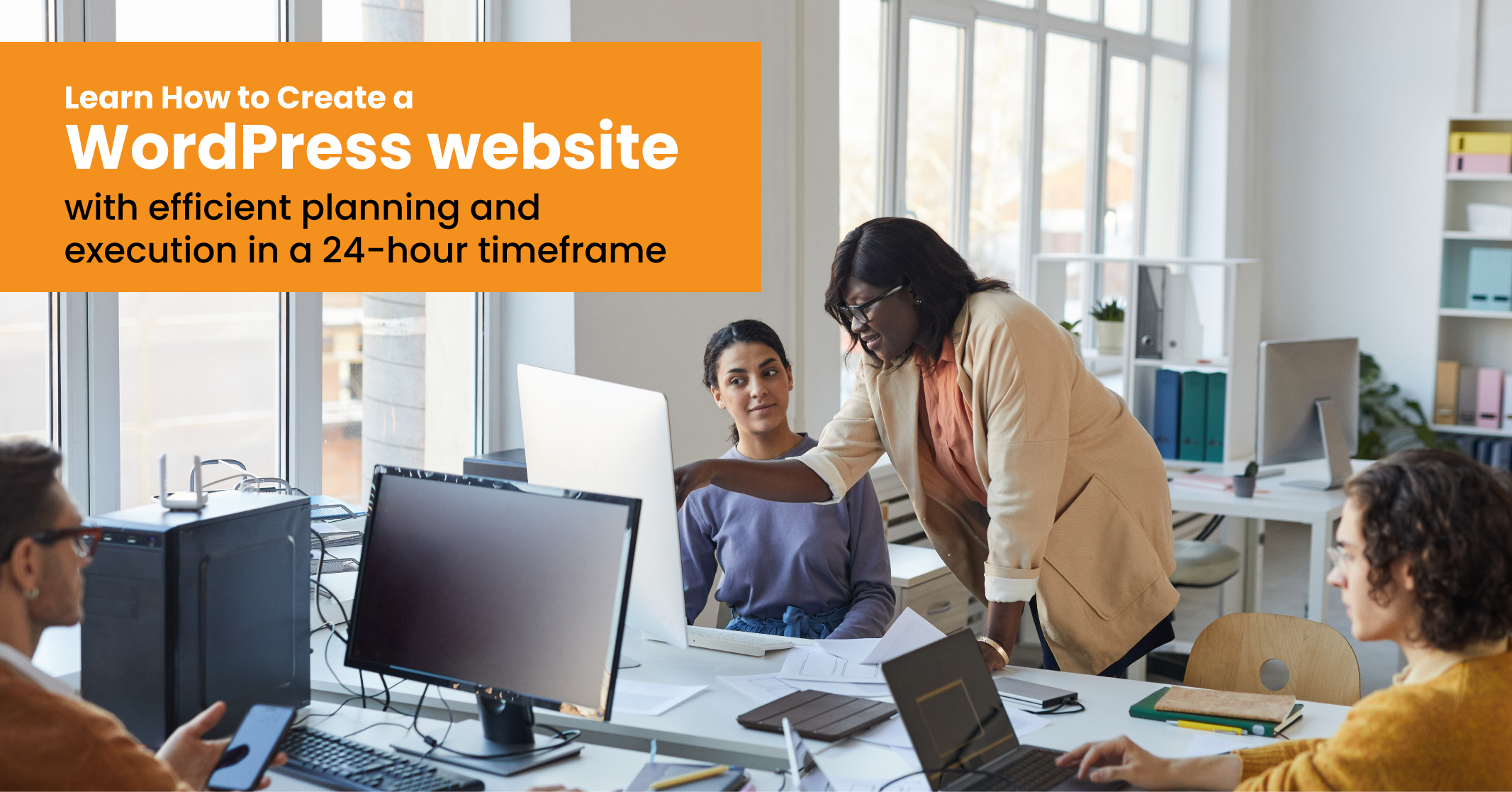Learn How to Create a WordPress website with efficient planning and execution in a 24-hour timeframe
If you want to create your own website in Australia, you’ll be happy to know that WordPress is an incredibly versatile platform that allows you to quickly build websites without extensive coding knowledge or development time.
One of the greatest advantages of WordPress is its high level of customisation. You have the freedom to fully customise your website’s theme, and there are countless plugins available that can add virtually any functionality you desire. The range of customisation options in WordPress is virtually limitless and is only constrained by your creativity and imagination.
Click Here – Free 30-Minute Strategy Session
Be quick! FREE spots are almost gone for this Month
Free Quote
What Does It Mean?
For instance, you can easily install a newsletter plugin to efficiently manage your newsletter subscriptions. Some plugins seamlessly integrate with WordPress and Google Analytics, providing you with valuable insights about your website’s performance.
Furthermore, WordPress plugins empower you to optimise your website for search engines. You can customise essential elements such as title tags, meta descriptions and meta keywords. Some plugins even offer advanced features, allowing you to exercise complete control over aspects like no-index and nofollow on individual pages.
With WordPress, the possibilities for customisation and enhancing your website’s functionality are extensive, enabling you to create a unique and tailored online presence.
Learn More: How to Create a Website on Your Own?
Here is What You Need to Know to Get Started
- Create A Domain Name
When it comes to selecting a domain name, there are several factors to consider for making a wise choice. First and foremost, a good domain name is crucial for establishing a strong online presence.
It should meet the following criteria:
- Concise: Opt for a domain name that is short and succinct. Ideally, it should consist of three words or fewer, with two words being even better.
- Memorable: Choose a domain name that is catchy and easy to remember. This will make it more likely for visitors to recall and revisit your website.
- Reflective: Your domain name should align with your business and accurately reflect its nature. It should provide a glimpse into what your website or brand offers.
- Keyword-relevant: Incorporating relevant keywords into your domain name can improve its visibility in search engine results. However, be cautious with exact-match keyword phrases, as search engine algorithms have become more sophisticated and may penalise such domains in the long run.
- Brand-focused: If you are creating a website for your company, it is advisable to choose a branded domain name. This ensures a stronger identity and potential for future brand recognition.
Note: Avoid using domain names that are too specific or tied to personal names, as they may limit your options for future growth or potential sale of the website. By carefully selecting a domain name that meets these criteria, you can lay a solid foundation for your website and increase its chances of success in the online world.
Select a Host
When it comes to creating your website in Australia, selecting a web host for your WordPress site is important. There are several factors to consider ensuring a smooth and reliable experience.
Here’s a guide to choosing a good web host:
- Evaluate Hosting Features: Look for a web host that offers the necessary features to support your website. Consider factors such as additional websites allowed bandwidth limits and control panel options. Ensure that the host can accommodate your needs and allows you to upgrade your bandwidth as your site grows.
- Scalability: As your website attracts more traffic, it’s crucial to have the ability to scale up your resources. Choose a host that provides flexible scalability options so that you can handle increased traffic without any downtime or performance issues.
- Security Measures: Website security is of utmost importance. Select a host that prioritises security and offers robust measures to protect your website from potential threats and hacking attempts. This will provide peace of mind and ensure the safety of your website and data.
- Research and Reviews: Before finalising a web host, conduct thorough research and read reviews from other users. Look for feedback on their reliability, customer support, server uptime and overall user experience. This will give you insights into the host’s reputation and help you make an informed decision.
- Compatibility: Ensure that the web host supports the specific requirements of WordPress. Look for hosts that offer easy installation of WordPress, provide optimised server configurations for WordPress sites, and offer seamless integration with the WordPress ecosystem.
Note: By carefully evaluating these factors and choosing a reliable web host, you can ensure that your WordPress site is hosted efficiently, allowing you to focus on building and growing your website without any major hosting-related obstacles.
Assess your current website
To begin building a WordPress site in a short timeframe, it is essential to assess your existing website and determine what elements you wish to retain or discard. Consider the following steps:
- Take a close look at your existing website and make an honest assessment of its strengths and weaknesses.
- Determine if it aligns with your goals and if it effectively represents your brand.
- Identify the aspects of your current website that you want to preserve, such as valuable content, branding elements or specific functionalities.
- Depending on the extent of changes desired, a full website migration may be necessary.
Note: By carefully assessing your existing website and determining what to keep or discard, you can make informed decisions about the direction of your new WordPress site.
Use WordPress

To begin building your WordPress site, follow these steps to download WordPress:
- Go to the official WordPress website, WordPress.org, where you can access the necessary installation files for WordPress.
- Locate the download section on the website and download the WordPress installation files to your computer. Once the download is complete, you can extract or unzip the files.
- Access your web hosting account by logging in to the control panel or using any provided login credentials.
- Within your web host’s control panel, navigate to the file management or file upload section. Choose the option to upload files and select the unzipped WordPress files from your computer. You can upload them to any desired location on your website.
- If you want your entire website to be based on WordPress, you can upload the files to the root folder of your website. This will replace the existing content with WordPress.
Note: By following these steps, you can successfully download the WordPress installation files and upload them to your web host. This will lay the foundation for setting up and configuring your WordPress site according to your desired structure and goals.
Create a Database
To prepare for the installation of WordPress, you need to create a MySQL database in Cpanel. This step is essential as WordPress requires a database to function properly. Here’s what you need to do:
- Log in to your hosting account and navigate to the Cpanel dashboard. The location and appearance of the Cpanel may vary depending on your hosting provider.
- Look for the MySQL Database Wizard tool in your Cpanel. It is typically found under the Databases section. If you have trouble finding it, refer to your hosting provider’s documentation or support files for guidance.
- Follow the instructions provided by the MySQL Database Wizard to create a new database. You may need to choose a name for your database, which should be unique and relevant to your WordPress site.
- As part of the database creation process, the MySQL Database Wizard will generate a username and prompt you to set a password. Take note of these credentials as you will need them in the subsequent steps.
Note: By following these steps, you can successfully create a MySQL database for your WordPress site. The database will serve as the storage and management system for your site’s content and settings.
Install WordPress
For this, you need to make a few modifications to the WordPress installation files. These changes are crucial for ensuring a smooth installation process. Follow the steps below:
- Locate the wp-config-sample.php file using your FTP solution. Rename this file to wp-config.php. This file contains important settings for your WordPress installation.
- Open the wp-config.php file and make changes to the following items: the database name, database username, database password, and database host. Remember the naming convention we discussed earlier, where the username is usually “username_db1.” Enter your database name and the corresponding username and password.
- Obtain Database Host: The database host information is provided by your hosting provider. Contact their support to obtain the specific details required for the wp-config.php file.
- Once you have renamed the wp-config-sample.php file and entered your database information, you’re ready to initiate the installation process. Visit the main install URL (typically your domain name) in your web browser.
- After a few seconds, you should see a welcome screen indicating that WordPress has been successfully installed. The message “Congratulations! WordPress is now installed”
Note: By following these steps, you can install WordPress within 15 minutes. Ensure that you accurately modify the wp-config.php file with the correct database details provided by your hosting provider.
Choose a Theme
To ensure a successful WordPress site, it’s crucial to find a suitable theme that meets your project’s requirements. When searching for a good theme, consider the following aspects:
- Look for a theme that aligns with the purpose and goals of your website. Whether it’s a blog, portfolio, or e-commerce site, ensure that the theme has the necessary features and layout options to fulfil your specific requirements.
- Opt for a theme that is lightweight and optimised for performance. A fast-loading theme contributes to a better user experience and improves overall site performance.
- It’s essential to choose a theme that adheres to coding standards and has valid HTML and CSS code. This ensures compatibility with different browsers and helps maintain a stable and reliable website.
- Consider a theme that is compatible with popular plugins and the specific ones you plan to use. This compatibility ensures smooth integration and functionality without conflicts.
- Look for a theme that offers reliable support and comprehensive documentation. A theme with excellent support ensures that you can get assistance when needed and detailed documentation helps you make the most of its features.
Note: By selecting a well-suited theme, you lay a solid foundation for your WordPress site, aligning its design and functionality with your project goals.
Install the Theme
Once you have chosen a theme that meets your requirements, installing it is a straightforward process. Here’s what you need to do:
- Download the theme files from the source and extract them to your local computer. The theme files are usually provided in a compressed format like ZIP.
- Access your WordPress installation on the server using FTP or the file manager provided by your hosting provider. Navigate to the “wp-content/themes” directory. Upload the extracted theme folder
- Log in to your WordPress dashboard and go to “Appearance” > “Themes.” You should see the newly uploaded theme listed among the available themes.
- Once the theme is activated, visit your website to see how it looks with the new theme. Take some time to explore the theme customisation options available in the WordPress customizer or theme settings.
- Ensure that your theme allows for comprehensive customisation. Ideally, the theme should provide various levels of customisation, including the ability to modify content and styling. A well-coded theme should not restrict your ability to customise your website.
Note: If none of the available themes meets your website requirements, you might need to explore custom theme development. Keep in mind that custom theme development typically exceeds the 24-hour timeframe and requires specialised skills.
Configuring the SEO Basics
To implement effective SEO for your WordPress site, it’s important to start with the configuration of key elements such as the permalink structure and the choice between using “www” or “non-www” in your URL.
- The first step is to customise your permalink structure to make it more search engine-friendly. You can access this setting by going to Settings > Permalinks in your WordPress dashboard.
- Another SEO consideration is whether to display your site with or without the “www” prefix. To make this adjustment, go to Settings > General in your WordPress dashboard.
Note: By properly configuring these SEO basics in WordPress, you’ll be setting a solid foundation for optimising your site’s visibility and performance in search engine results.
Learn More: An Authoritative Guide to Optimising SEO for WordPress
How Do You Create Your Own Website: Useful Tips

To ensure the security of your WordPress site, it’s important to follow some maintenance tips that will help protect your backend from potential hackers. Consider the following recommendations:
- Change Your Admin Directory: Altering the default admin directory on your site is a wise step to prevent unauthorised access. By modifying the directory name, you make it harder for hackers to find the login page and attempt malicious activities. This simple change adds an extra layer of security to your site.
- Use Strong Passwords: It is highly recommended to use strong and complex passwords for your WordPress accounts, including the administrator account. Opt for lengthy passwords, consisting of a combination of uppercase and lowercase letters, numbers and special characters. Avoid using common words or easily guessable information, such as “password,” your name or birthdate.
By implementing these measures, you prioritise the security of your WordPress site. Taking these precautions from the beginning will ensure a safer online environment and minimise the risk of encountering security issues down the line.
Ensure Effective Handling of Archive Pages and Unnecessary Archives

While creating your own website in Australia, Archive pages can become a major source of duplicate content within your WordPress site, potentially impacting its overall performance, especially as it grows. Avoiding this issue from the start will save you headaches in the future.
To streamline your optimisation efforts, it’s important to configure the proper settings.
What To Do?
- You can find these options in the Yoast SEO plugin under Yoast > Titles & Metas > Other.
- Look for the setting that allows you to “Noindex subpages of archives” and enable it. This will prevent search engines from indexing individual subpages within your archive, reducing the risk of duplicate content.
- Implement NOODP and NOYDIR meta robots tags site-wide; these tags will prevent search engines, including Google, from using descriptions from directories like DMOZ and Yahoo Directory.
- Enable the “use meta keywords tag”
Conclusion
While building a competent WordPress site can be achieved in less than 24 hours, creating a remarkable online presence that consistently drives traffic takes much longer. Embrace experimentation and testing to discover the best strategies for ranking well in search engine result pages (SERPs) and enhancing your overall visibility.
Still, wondering how you create your own website? Consult with the team of Traffic Radius today. We offer website development services to help clients represent their brands online on a global scale.







LEAVE A REPLY